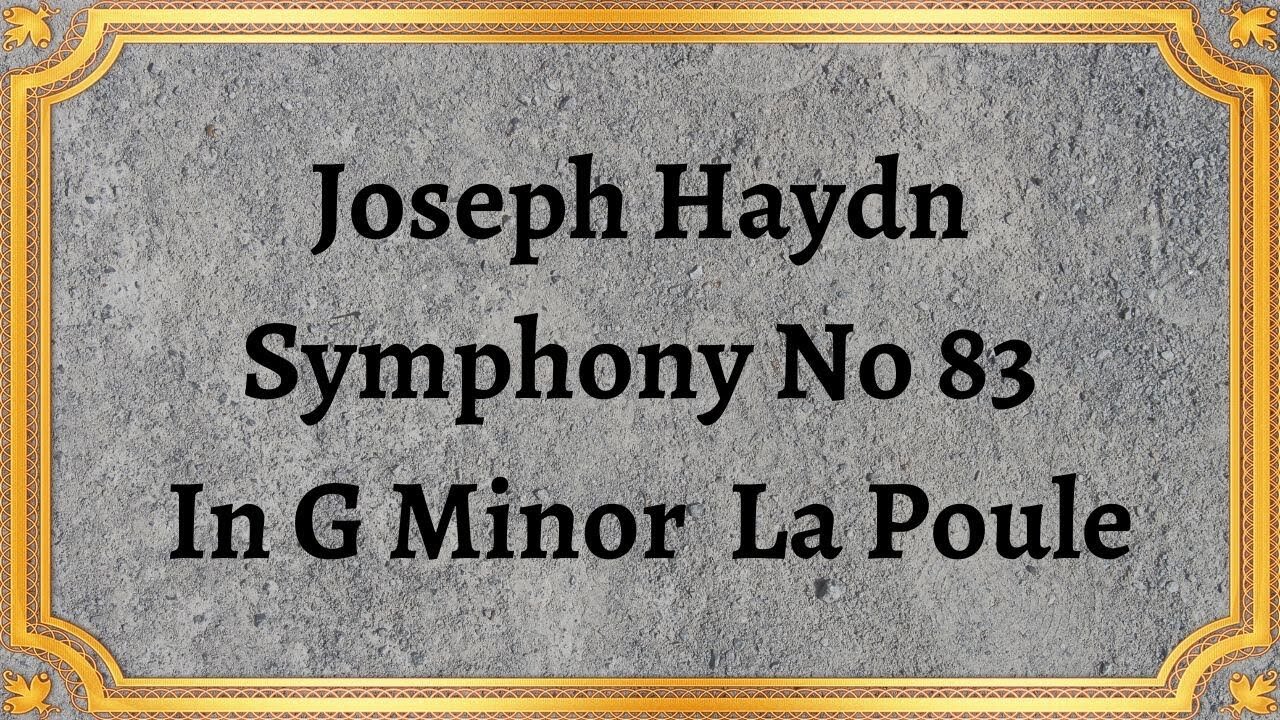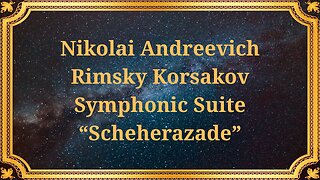Premium Only Content

Joseph Haydn Symphony No 83 In G Minor La Poule
#JosephHaydn#SymphonyNo83#LaPoule#Gminor#ClassicalMusic#OrchestralMusic#MusicalComposition#MusicHistory#MusicAnalysis#MusicAppreciation#MusicEducation#MusicTheory#MusicPerformance#MusicProduction
#Musician#Composer#Conductor#ClassicalConcert
Publication date 1950
Collegium Musicum, Vienna; Anton Heiller
Joseph Haydn's Symphony No.83 in G minor, nicknamed "La Poule", is one of his most celebrated orchestral works. Composed in 1785, this symphony is notable for its vibrant and playful melodies, complex harmonies and dynamic rhythms, which make it an excellent example of the classical era's music.
The nickname "La Poule" (French for "The Hen") has an interesting story behind it. During the performance of the symphony, Haydn introduced a humorous effect in the fourth movement by adding clucks to the music, imitating the sounds of a chicken. The effect was so convincing and entertaining that some members of the audience mistook it for a real hen and started searching for it!
The symphony is composed of four movements. The first movement, marked "Allegro spiritoso," opens with a dramatic and bold introduction that sets the tone for the rest of the piece. This movement features an energetic melody, which is rich in harmonies and effectively creates tension and excitement.
The second movement, marked "Andante," is a beautiful contrast to the first movement. It is a slow and lyrical melody, featuring graceful strings and woodwinds. The melody is serene and peaceful, and it effectively captures the mood and emotions of the piece.
The third movement, marked "Menuetto," is a lively dance, which features a catchy melody and rhythmic patterns. It is marked by sudden changes in tempo and dynamics, effectively creating tension and excitement.
The fourth and final movement, marked "Vivace," is where the chicken clucking effect is introduced. The music changes between fast and slow tempos, with the orchestra imitating the sounds of a chicken. This provides a humorous and light-hearted ending to the symphony.
Overall, Joseph Haydn's Symphony No.83 in G minor, "La Poule," is a prime example of the composer's unique style. His experiments with melody, harmony, and rhythm created a masterpiece that is still appreciated and studied by music lovers all over the world. It's a tribute to Haydn's genius that more than two centuries later, we are still clucking to "La Poule."
You have the opportunity to support the channel https://destream.net/live/RadSiarAl/donate
-
 41:38
41:38
Classical music_Music Inspiration
1 month agoNikolai Andreevich Rimsky Korsakov Symphonic Suite “Scheherazade”
1451 -
 10:35
10:35
Warren Smith - Secret Scholar Society
1 day agoExposing the Illusion of Gary's Economics
46.7K11 -
 13:14
13:14
Michael Button
1 day ago $2.12 earnedThere’s a Giant Hole in Human History
10.3K13 -
 9:23
9:23
Russell Brand
21 hours agoThe TRUTH Behind Stephen Colbert's Downfall
52K73 -
 17:47
17:47
T-SPLY
1 day agoDems Fume: L.A Protesters Clash With Federal Agents And National Guard...Again!
10.8K13 -
 LIVE
LIVE
Lofi Girl
2 years agolofi hip hop radio 📚 - beats to relax/study to
430 watching -
 22:50
22:50
marcushouse
1 day ago $0.96 earnedStarship Tech Update Reveal, and Fire Time Already!? 🔥
10.5K5 -
 53:17
53:17
The Car Guy Online
21 hours ago $1.30 earnedNextGen Engineer Reveals How GM Is Quietly Fixing 10-Speed Problems.
10.7K1 -
 1:26:10
1:26:10
Squaring The Circle, A Randall Carlson Podcast
1 day ago#057 What REALLY Happened During The Younger Dryas - Squaring The Circle
8.29K3 -
 14:53
14:53
Degenerate Jay
1 day ago $0.21 earnedThe Henry Cavill Superman Return - James Gunn Was Blindsided?
4.64K3